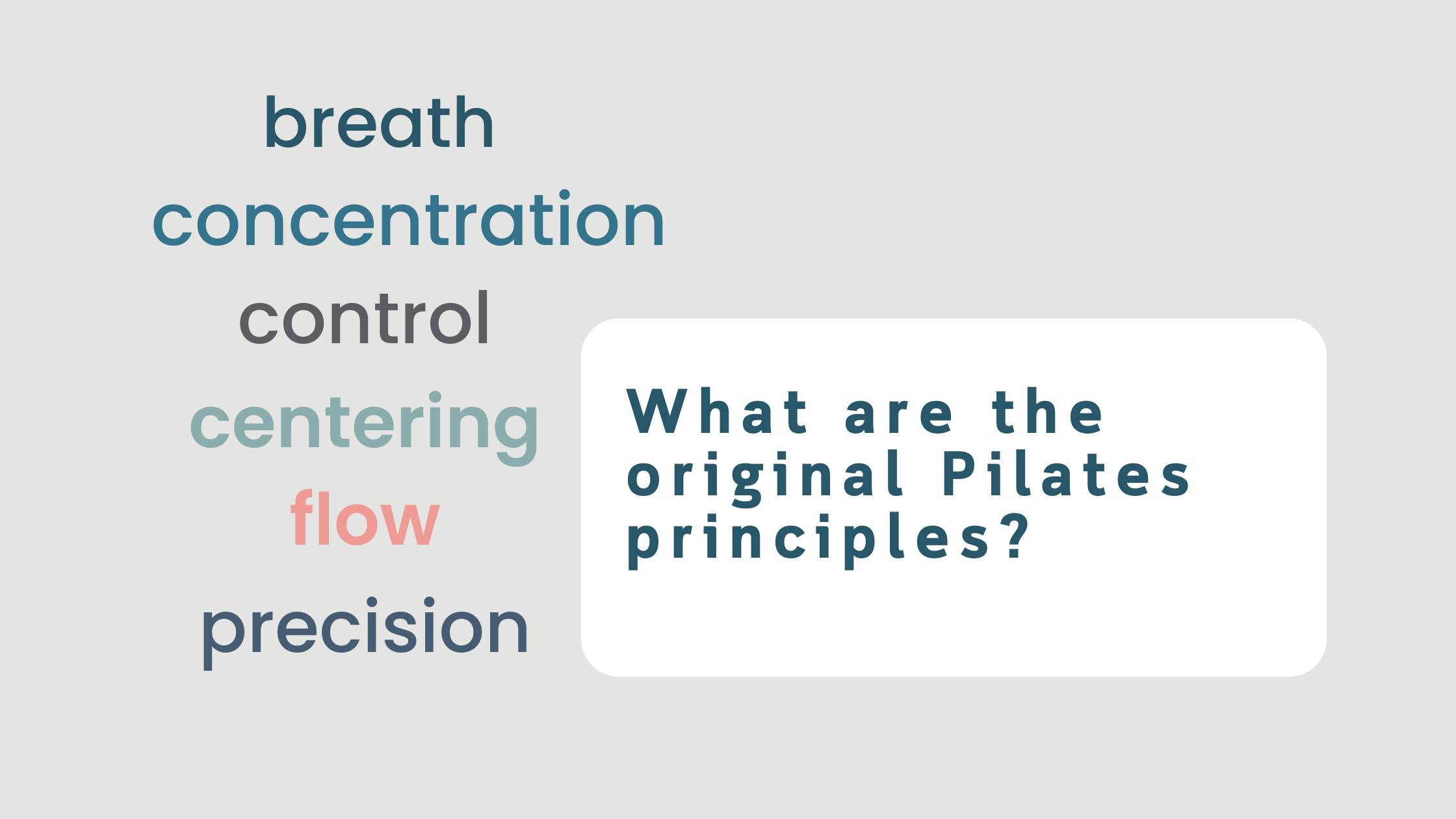What are the original Pilates principles?
The 6 original principles of Contrology.
The foundation of Pilates.
Creator of Pilates, Joseph Pilates’s original work was called “Contrology,” integrating mind-body-spirit. However, it is said that he never actually wrote the 6 Pilates Principles, rather that they were written by his students, to make his method accessible for future generations of students.
Since then, there have been many disputes as to whether there are 6 or 9 Principles, which words are correct, and in which order they should be depicted. None-the-less, as an instructor, I base my work on these 6 Principles:
Breathing
The breath was one of Joseph Pilates’ most essential focus. He is quoted saying that “Breathing is the first act of life, and the last… above all, learn how to breathe correctly.”
Coordinating the breath with movement can prove to be difficult at first; the full inhale through the nose (completely filling the lungs) and then engaging the core as you slowly exhale (through the mouth, like fogging up a mirror) while initiating the movement. But like anything, this can be achieved through proper instruction and practice. Take heart, this does become easier, I promise.
“The lungs cannot be completely deflated at first without considerable effort. With perseverance, however, the desired results can be accomplished and with increasing power, gradually and progressively develop the lungs to their maximum capacity.” Joseph Pilates
Concentration
To do any Pilates exercise, no matter how simple, demands intense focus. The ‘way’ in which an exercise is done, is far more important than the ‘exercise itself.’ There is so much at play at any one moment during a Pilates exercise: The position of the pelvis, legs, upper body, head, neck, and then there’s the breath as mentioned before.
It is only in concentrating on all the above aspects, can we truly benefit from each Pilates exercise and gain the mind-body connection that Pilates developed.
“Concentrate on the correct movement each time you exercise, lest you do them improperly and thus lose all the vital benefits. Correctly executed and mastered to the point of subconscious reaction, these exercises will reflect grace and balance in your routine activities.” Joseph Pilates
Control
Romana Kryzanowska, one of Joseph Pilates’s original students said:
“You can say what Pilates is in three words. Stretch with Strength and Control. And the control part is the most important because that makes you use your mind.”
Each exercise in Pilates is done with control. By focusing on the objective of each exercise negates “flapping around” or “doing” an exercise just to get it done.
“The Pilates Method teaches you to be in control of your body and not at its mercy.” “Patience and persistence are vital qualities in the ultimate successful accomplishment of any worthwhile endeavor.” - Joseph Pilates
Centering
All movement in Pilates begins from our center and moves outward to our limbs. Imagine our center as an apple core. The apple ‘flesh’ and ‘skin’ would not exist without the apple core. The same can be set with our core.
Joseph Pilates describes our core as our “powerhouse,” which consists of the front, sides, back, top, and bottom of your torso.
By correctly engaging these muscles decreases your chance of back pain, improves freedom of daily movement, and improves your balance.
Flow
Pilates aims at creating flow from one exercise to the next with grace and economy of movement to build both strength and stamina.
Precision
Precision is essential to correct Pilates. The focus is on doing fewer good movements with precise and perfect form than many half-hearted ones. The goal is for this precision to eventually become second nature and carry over into everyday life as grace and economy of movement.
These 6 Principles take time to become second nature. That really is the beauty of Pilates - it’s a journey, not a destination.


